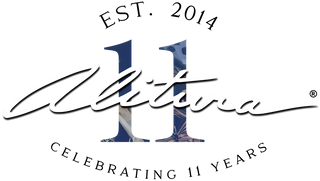Alcohol & Skin Health: Is Drinking Aging Your Skin?

Most of us are aware of the negative effects that chronic alcohol consumption can have on our health. Countless studies have verified that regular drinking is associated with a range of health problems including liver and pancreas diseases, hepatic encephalopathy, stroke, seizures, brain aging, and more. 1
However, it seems fewer people are aware of the damaging effects that routine drinking can have on physical appearance and the health of the skin. In fact, research has confirmed that alcoholics resemble elderly nonalcoholics on a variety of biomarkers. Some of these biomarkers include behavioral, electrophysiological, neurological, hormonal, and more. In other words, drinking ages us physiologically.
One study found that people who drink excessively were 33% more likely to have “grey rings” around the corners of their eyes. This condition is known as arcus senilis, which normally doesn’t occur until after the age of 60. 2 This is just one example of how regular drinking can deplete our physical beauty. Let’s take a look at some of the other ways alcohol can affect your skin...

Alcohol & Skin Aging
Even one long night of drinking shows on the face similar to how a bad night of sleep can. Aside from simple observation, there also happens to be plenty of studies that have observed the inverse relationship between regular alcohol consumption and accelerated aging.
Here are a few things we know about alcohol and skin health:
1. Broken blood vessels
Alcohol can increase nitric oxide and cause the blood vessels in the skin to dilate rapidly. On the short term, this causes flushing but overtime the capillaries become stressed from the dilation to the point of breaking. This produces unsightly red and purple veins on the skin. Unfortunately, broken blood vessels are difficult to reverse, so the best route of treatment is prevention. In other words, it is best to avoid excessive consumption of alcohol. It is also good to avoid anything else that consistently stimulates the overproduction of nitric oxide.
2. Wrinkles
Alcohol stimulates lipogenesis, causing cellular and tissue dehydration of the skin. Just one night of excessive drinking can cause enough skin dehydration for wrinkles and fine lines to become more visible. This can very quickly decrease the quality and appearance of the skin. It may cause oxidative damage over time, which leads to wrinkling.
Another way alcohol can lead to wrinkles is by increasing the production of estrogen and cortisol. Alcoholic beverages contain estrogen as a reproductive byproduct of the yeast used to make them. Beer is even more estrogenic because it is made from hops, a phytoestrogenic herb. Estrogen steals oxygen from cells, which can weaken the vascular system as well as the tone and integrity of skin tissue. Read more about the harmful effects of estrogen on our previous blog.
Estrogen also stimulates the adrenal glands, by way of the pituitary to secrete cortisol. Cortisol can be very aging to the skin in a few different ways. Cortisol impairs skin regeneration by interfering with protein synthesis. It also directly catabolizes skin tissue to make glucose through a process called gluconeogenesis.
Not to mention, it is well known that stress, which stimulates cortisol, can lead to accelerated skin aging. For example, elevated cortisol and drinking can interfere with glucose regulation. And both high cortisol and glucose levels are associated with a 30-50% increase of facial aging and wrinkling. 3, 4
3. Acne, Eczema & Psoriasis
The various wild yeasts and other toxins present in alcoholic beverages can increase the production of bacterial endotoxin in the gut. This leads to many skin issues. As we discussed recently, endotoxin can lead to age spots. In addition, the gut irritating effects of alcohol and endotoxin can cause autoimmune skin conditions like eczema and psoriasis.
In fact, studies have found that conditions such as acne, rosacea, eczema, and psoriasis all get much worse post-alcohol consumption. These effects are likely due to a number of reasons including the immunosuppressive effects of estrogen, stimulation of endotoxin, and inflammation caused by estrogen and nitric oxide. 5
4. Cellulite
Cellulite tends to be driven by a few different factors, all which alcohol may contribute to. Cellulite occurs when the fat cells become abnormally large, which is usually the result of impaired fat metabolism as well as the accumulation of toxins that store as fat. Not only does alcohol weaken the metabolism, but it is also a toxic substance that weakens liver function.
When the liver cannot efficiently metabolize toxins, they tend to store as adipose tissue (fat tissue). Again, alcohol consumption also stimulates lipogenesis and causes dehydration, resulting in the excessive and improper storage of fat. This accumulation of fat tissue can contribute to the enlargement of the fat cells in the body.
Another hallmark of cellulite is a weak, non-elastic skin matrix, which alcohol can contribute to. As we learned, the estrogens in alcohol can decrease the tone of the tissue in the body by destroying or breaking down hyaluronic acid and stimulating cortisol production. When the skin matrix loses its tone, this allows fat cells to bulge through the skin resulting in the classic “cottage cheese” appearance of cellulite. 6
5. Varicose Veins
Studies have also found a link between regular alcohol consumption and an increased risk of varicose veins in both women and women. As previously mentioned, one of estrogen's main negative effects on the skin is it can weaken the tone and integrity of the skin, this is also true for the veins. Estrogen can also impair healthy circulation by suppressing thyroid function. The combination of thin veins and poor circulation can cause blood to pool and bulge through the vein resulting in varicose veins. Check out our previous blog for natural ways to prevent varicose veins. 7, 8

Tips for Combating Alcohol-Induced Skin Aging
As damaging as drinking can be on the body and skin, there is a silver lining. The good news is that all of these issues are easily avoided by simply moderating or avoiding alcohol consumption. That being said, below are some basic recommendations for preserving and enhancing your skin.
Moderate Alcohol Consumption
Avoiding heavy drinking is key. Keep alcohol consumption as sparse as possible for ideal results. When you do drink, we recommend having some “salted water” prior to drinking alcohol. The salt and water will help to minimize the stress and dehydration of alcohol consumption.
Choose Clear Liquors
Of the various types of alcohol, beer and wine have the most antioxidants, so they may provide some benefits in small amounts. However, they also have the most estrogenic and allergenic components, which can irritate the skin. Clear distilled liquors like tequila, vodka and gin are potato and grain-free and have the least estrogens.
Keep It Simple
Elaborate mixed drinks often contain allergenic ingredients made of high fructose corn syrup, food dyes, and other chemical additives. These may be problematic. We recommend drinking straight (organic if possible) liquors or small amounts of biodynamic wine. If you want a cocktail, keep it simple, try a clear liquor with quality sparkling mineral water and a splash of fresh orange juice. The minerals and healthy sugars in them can help mitigate some of the stressful effects of alcohol.
Replenish
One of the reasons alcohol can be so damaging is that the estrogen places stress on the body and increases the demand for nutrients. When the body is depleted of its energy reserves, it cannot produce energy and becomes stressed and inflamed.
Therefore, it is very important to replenish the nutrients lost from drinking, which include most of the B vitamins, magnesium, glucose, and others. Interestingly enough, most of the nutrients depleted by drinking can be replenished by drinking fresh orange juice, good coffee, and eggs – which seems to already be the standard “hangover breakfast” for many.
Lower Cortisol
Recent research has found that “blocking” the stress hormone cortisol may help treat addiction. According to scientists and biologist, addiction to things like alcohol is the body’s attempt to relieve stress by ingesting substances that lower stress. On the short term, alcohol does increase GABA activity, which is a natural antagonist to cortisol and will have an anti-stress effect. In fact, GABA agonists are used clinically to treat hypercortisolemia or Cushing syndrome.
However, because alcohol consumption over the long term can have adverse effects, it would be wiser to use safer anti-cortisol substances. The Alitura Revitalize contains herbs like ashwagandha and schizandra, which safely and effectively lower cortisol. 9, 10
The Bottom Line
As the saying goes, the poison is in the dose. Many things in life act as “adaptogens”, and in the right amount can help bring the body back into balance; alcohol is one of those substances. The goal is to know the limit and not depend on a substance like alcohol for regular relief of stress. As we’ve learned, chronic alcohol consumption can produce undesirable effects.
If you care for your skin as much as we do, then moderating alcohol consumption should be a key principle in your holistic skincare regime. Hopefully, this article has provided simple and actionable tips for having your drink and enjoying it, without it costing you your beauty.

The Natural Path to Perfect Skin
30 PAGES FULL OF SKINCARE SECRETS
GET YOUR FREE EBOOK HERE







Leave a comment